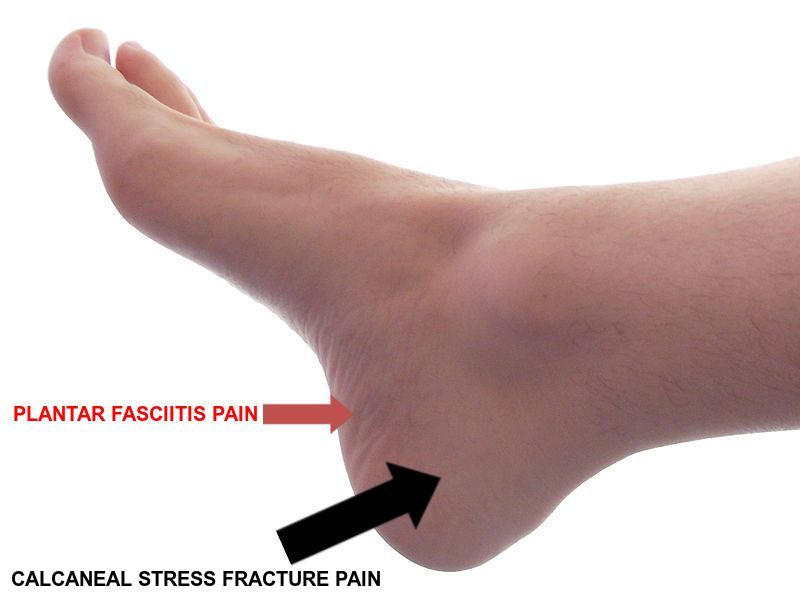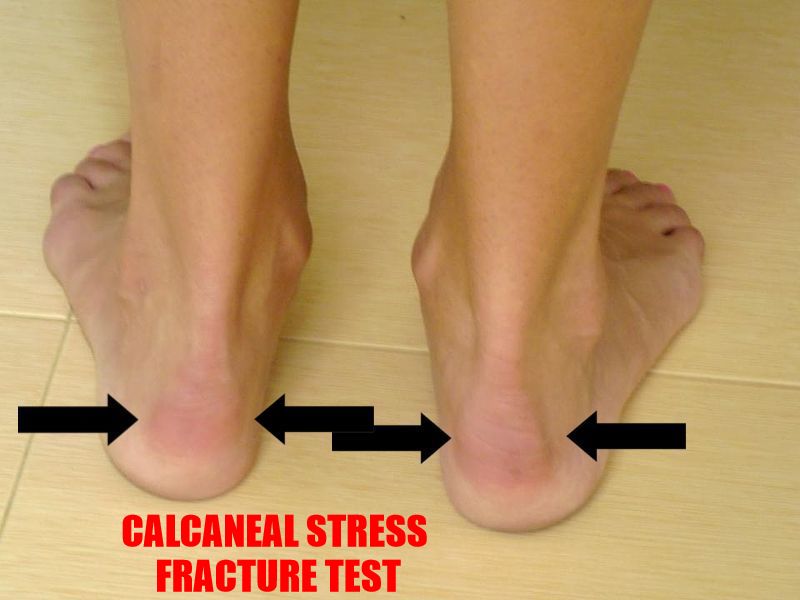THE CALCANEAL (HEEL) STRESS FRACTURES: DIAGNOSIS & TREATMENT


There are any number of lower extremity injuries that kids tend to get as the result of sports. OSGOOD SCHLATTER is a common one, as are ANKLE SPRAINS of varying degrees. I also see a lot of kids (as well as adults) with PATELLO-FEMORAL SYNDROME, aka Patellar-Tracking Syndrome. The cool thing is that I can usually help people dealing with these sorts of problems, often seeing results immediately (click the links). Immediate results, however, are not something you are going to get with stress fractures of the heel or “calcaneus”.
The first thing you have to do is to determine whether or not your child (or you for that matter) has a stress fracture of the calcaneus (heel bone). Although you can go have X-rays, CT SCANS, bone scans, etc, this is just about like X-raying a rib to see whether or not it might be cracked (we are not talking “shattered” here as might be seen in severe trauma). Considering the treatment is the same whether it is or isn’t, why bother?
The test for determining a Calcaneal Stress Fracture simply involves grabbing the sides of the heel with your thumb and forefinger (see the black arrows above) and giving a firm (firm) squeeze. If there is pain, then there is likely a stress fracture.
What exactly is a stress fracture? Stress fractures occur mostly in the lower extremity and foot, and occur mostly due to overuse. When muscles get fatigued, they have a diminished ability to act in their secondary role as shock absorbers (their primary role is contracting). The result is a tiny fracture that may or may not show up on X-ray. And like almost every other health problem out there, females are more prone than men.
The best way to deal with a stress fracture is by staying off of it for 4-6 weeks — the amount of time it will take the fracture to heal (my experience is that in kids they will often heal faster than that). Beyond rest, other forms of treatment that might prove helpful (or measures that might prevent recurrence) include….
- CALCIFOOD: Despite ingesting far more calcium than most of the rest of the world, incidence of fractures (stress fractures included) are exploding in the pediatric population (HERE). The solution is not taking more calcium supplements (HERE)! Learn why there is only one real calcium supplement out there, and it comes from raw bone meal (HERE).
- LOW LEVEL LASER THERAPY: In case you haven’t heard, LOW LEVEL LASER THERAPY is good for almost anything and everything. Click the link to find out why.
- BETTER SHOES & ORTHOTICS: Unfortunately, way too many people — even people who spend lots of money on their footwear — are wearing the wrong shoes for their foot type. For example, it’s not uncommon for me to find a person with a high-arched rigid foot (a supinator), wearing “stability” shoes used to correct pronation. The result is that people are often thrown into the very posture or position they are trying to avoid. How do you find out if a certain shoe is right for you? One of the best ways is to have a video gait analysis done by someone who knows the score (HERE for instance). While this is relatively simple in large urban areas with huge shoe stores or departments, you won’t find it in our neck of the woods.
- STAY OFF THE CONCRETE: Look; I completely realize that you aren’t going to be able to live you life barefoot on the beach. Just remember that HARD SURFACES will eat you up over time, and that they are a huge contributing factor to stress fractures as well.
- DON’T OVERTRAIN: This one is huge. Of the people who love to work out, a significant portion works out too much, too often, too intensely, or too long. The results of overtraining are never good. It all comes back to the concept of MED or Minimal Effective Dose. For instance, if three sets of ten pull-ups is optimal for muscular development, anything more than that is at best a waste of time, and at worst counterproductive or even harmful. While it’s true that sunshine is healthy, exposing your skin to anything over a certain amount is going cause varying degrees of damage in the form of a sunburn. If you are overtraining, you are causing varying degrees of damage to certain body tissues.
- USE GOOD FORM: Honestly, this is a no-brainer. I don’t care whether it’s playing tennis, running, lifting weights, or throwing a baseball, poor form is going to adversely affect your body, leading to increased chances of developing a stress fracture.
- ENGAGE IN REGULAR STRENGTH TRAINING: Because stress fractures often start with fatigued, weak, or underworked muscles, one of the very best ways to solve (or better yet, prevent) the problem is make sure your muscles are strong. Muscles are strengthened by resistance training, not straight cardio. It’s why the importance of adding STRENGTH TRAINING to whatever kind of training you are doing cannot be overlooked. If you are an athlete who finds yourself injured but needing to train, the pool or bicycle can be great alternatives to pounding-type exercises.
How common are these calcaneal stress fractures in kids? The December 2014 issue of the Brazilian medical journal, Revista da Associação Médica Brasileira (Stress Fractures in the Foot and Ankle of Athletes) gives us a pretty good idea.
“Stress injuries are common among athletes and military recruits, accounting for approximately 10% of all orthopedic injuries. Prospective and retrospective studies show a higher incidence among Caucasians. When compared to American black and Hispanic individuals, white individuals are more susceptible to stress fractures. The same occurs with age: older individuals present a higher incidence of such fracture. Stress fractures are less common in children than adolescents and adults. In relation to sex, some studies have shown that military women have an incidence 5 to 10 times higher than men.”
Because of my experience, I think we may be way underestimating these particular stress fractures in kids. I not only saw calcaneal stress fractures in at least 3 OF MY 4 KIDS (all are soccer players), but I saw it in kids I coached as well (not to mention in patients). Soccer-wise, it was most common during dry periods when the fields were hard as proverbial rocks, or in kids who were both playing soccer and running cross country or playing basketball.
